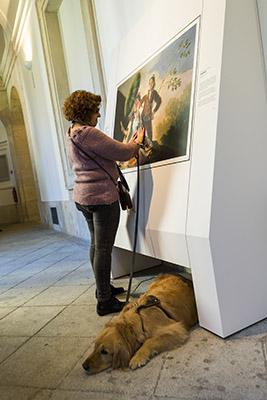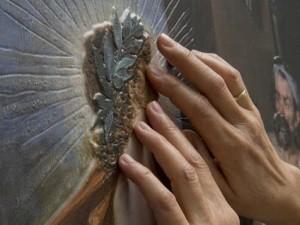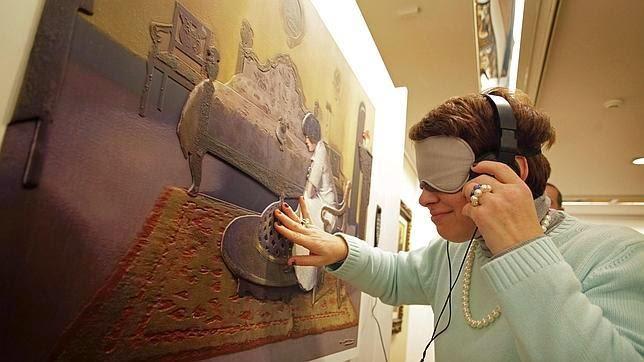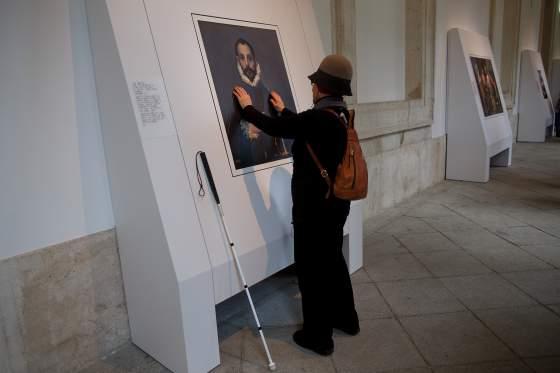 A few strict rules usually accompany museum visits, and these include “No Photographs” and “No Touching.” Now a new 3D printing technique is being applied to buck these conventional rules, allowing sight-impaired visitors more access to great works of art through an unusual pathway: they can touch printed recreations of great works to their heart’s content in specific exhibits designed for just this purpose.
A few strict rules usually accompany museum visits, and these include “No Photographs” and “No Touching.” Now a new 3D printing technique is being applied to buck these conventional rules, allowing sight-impaired visitors more access to great works of art through an unusual pathway: they can touch printed recreations of great works to their heart’s content in specific exhibits designed for just this purpose.
Museums have long struggled to create accessible exhibits for sight-impaired visitors, with guided tours being one of the most commonly offered. However, the guided tour relies quite a bit on verbal description, leaving much to be desired regarding communicating a sense of the objects’ spatial dimensions. Touch tours have also been used, where sight-impaired visitors can actually touch sculptures in a museum’s collection while under close supervisi on and guidance from museum staff.
on and guidance from museum staff.
We’ve seen a few uses of 3D printing to help the visually impaired experience visual arts. Now, a 3D printing technique called Didú is introducing yet another way to include the sight-impaired in art appreciation by allowing them to truly feel the artworks.
Madrid, Spain’s Prado Museum has launched an exhibit titled “Touching the Prado” which features Didú reprints of six painting masterpieces from its collection including Velazquez’s “The Triumph of Bacchus” and “Apollo in the Forge of Vulcan,” El Greco’s “Nobleman with His Hand on His Chest,” and Goya’s “The Parasol.” The paintings are photographed and 3D printed to create almost a textual guide to the original paintings (see video below or photographs here).
Didú is a technique created by Bilbao, Spain-based design agency Estudios Durero, which describes the technique on their website as “relief printing which allows us to get closer to art in a different way” by adding volume and texture to what is usually a flat representation. Or in the cases of paintings with texture, paintings are off-limits for touching because touch can alter the paintings’ sensitive constitution. As the Washington Post has described the Didú technique, it takes about 40 hours to achieve the detailed effects of volume and texture in a high resolution photograph of an original artwork. After the printing, it takes another 12 hours to apply a chemical that brings volume to otherwise flat surfaces. The outcome is an original interpretation of the original — a tactile image — that  can bring out entirely different dimensions in art that all can enjoy.
can bring out entirely different dimensions in art that all can enjoy.
Instead of having the paintings’ details described, now they can also be felt — offering a different sensory experience to great works of art. In fact, by touching one’s way through an artwork, the sight-impaired can create a mental map of the entire piece, and potentially develop a more emotional response to the experience as well. The exhibit, which museum officials developed in collaboration with visual impairment professionals, includes braille-based educational materials, audio guides for visitors, and even opaque glasses to enhance the experience for fully-sighted visitors.
The impetus for the exhibit was that the museum lagged behind creating accessible exhibits for sight-impaired visitors although they had recently offered exhibits focusing on those experiencing Alzheimer’s-related dementia and autism. Didú’s special facilitation of art appreciation through touch creates almost a revolution for the sight-impaired when it comes to experiencing art, and it is also a welcome technology for sighted people to experience art in a radical new way: by touching it!
The exhibit is running through June 28, 2015 and you can follow Estudios Durero’s progress on Twitter, too. Tell us what you think about this initiative in the Didú 3D Relief Printing forum thread over at 3DPB.com.
Subscribe to Our Email Newsletter
Stay up-to-date on all the latest news from the 3D printing industry and receive information and offers from third party vendors.
You May Also Like
Further Understanding of 3D Printing Design at ADDITIV Design World
ADDITIV is back once again! This time, the virtual platform for additive manufacturing will be holding the first-ever edition of ADDITIV Design World on May 23rd from 9:00 AM –...
3D Printer Maker EVO-tech Reborn as NEVO3D — Once More With Feeling
EVO-tech was a 3D printing service and original equipment manufacturer established in 2013 and based in Schörfling am Attersee, Austria. The company produced high-quality material extrusion systems featuring linear bearings,...
3D Systems Brings 3D Printed PEEK Cranial Implant to the U.S. with FDA Clearance
For more than 10 years, 3D Systems (NYSE:DDD) has worked hand-in-hand with surgeons to plan over 150,000 patient-specific cases, and develop more than two million instruments and implants from its...
CDFAM Returns to Berlin for Second Annual Symposium
The second CDFAM Computational Design Symposium is scheduled for May 7-8, 2024, in Berlin, and will convene leading experts in computational design across all scales. Building upon the first event...


































